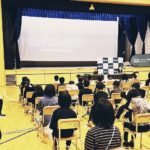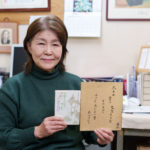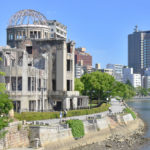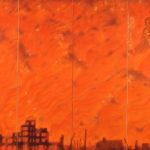War, Sports, and Hiroshima Photographed by an Olympic Athlete and A-bomb Survivor

The photographs taken by Takata Shizuo, who was a top athlete before World War II and competed in the 1936 Berlin Olympics in the shot put, are taken from the perspective of an athlete and are now highly valued. We interviewed Shizuo’s grandson, photographer Takata Toshiaki.


My grandfather, Takata Shizuo, was born in 1909 in the city of Hiroshima, and switched from being a judo athlete to a shot put thrower. He soon set a Japanese record and represented Japan in the 1936 Berlin Olympics. At the Berlin Olympics, each athlete was given a camera so that they could film the other athletes from a nearby location in the arena. I think he must have learned a thing or two about camera operation at that time.
After returning to Japan, the war (World War II) started and Shizuo, who was living in Hiroshima, was exposed to the atomic bomb. On the day of the atomic bombing, coincidentally, he was unable to finish his morning work, so he stayed at the office and saved his own life, but lost his precious daughter. In addition, the blast from the atomic bomb injured his left shoulder and Achilles tendon, and he was forced to lie in bed due to the aftereffects of the bombing. Later, around 1954, he and his son, my father, started taking up cameras in earnest.
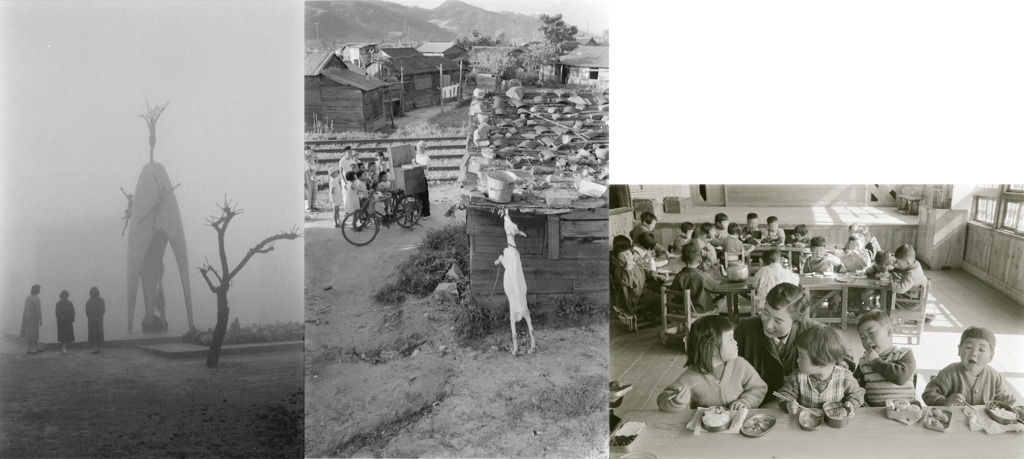
In the beginning, many of the photographs had a gloomy tone, perhaps due to depressed feelings or physical ailments, but gradually he began to take more photographs of the people living in Hiroshima and of people playing sports.
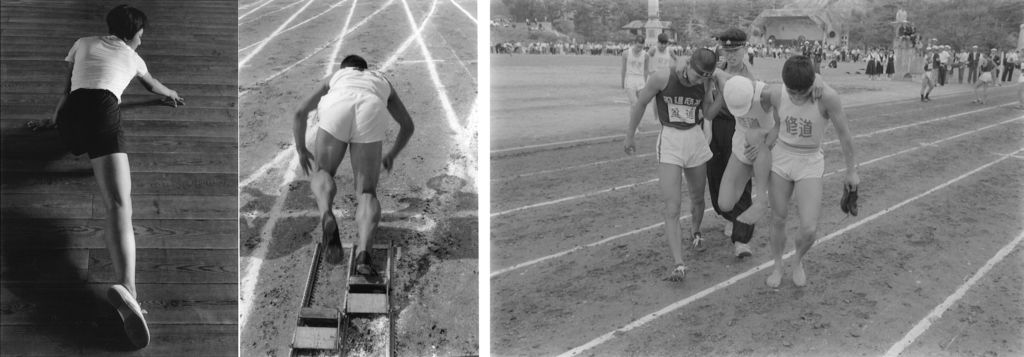
In 1957, he was given a series of articles entitled “The Spirit of Competition” in Athletics Magazine, in which he published close-up photographs of athletes. The series conveyed the meaning of sportsmanship and the brighter times ahead, when supplies were available and girls could play sports with smiles on their faces.

It also seems that his life’s work was to talk to foreign tourists visiting Hiroshima and photograph them along the road from the Hiroshima Peace Memorial Museum to the cenotaph, as typified by the photo “Road to Peace” used in the poster of the exhibition.
I heard that in his later years, Shizuo was bedridden, and that he only held me in his arms once when I was born around that time. I don’t have any memories of my grandfather in my mind, but I have learned a lot from the photos he took and the articles he wrote back then.

In 2016, we found the negatives that Shizuo left behind from the 1936 Berlin Olympics, and since it was just after the decision was made to hold the Tokyo Olympics, we gathered the photos and held our first photo exhibition in Tokyo, Osaka, and Nagoya in 2018. Through Shizuo’s photographs, we hope that visitors were able to feel the true nature of photography, which is to “record” and “communicate,” and that they were able to feel the war, sports, and the people of Hiroshima at that time from a slightly different angle than in the past.
And now, for the first time in Hiroshima, we will be holding a major photo exhibition. The exhibition will include new photos of Hiroshima’s scenery and Shizuo’s daily life, as well as “original prints” printed by the man himself.
We hope that many people will learn that there was a man named Takata Shizuo, and that they will be able to feel the message of sportsmanship, people’s lives, and peace that his photographs convey.
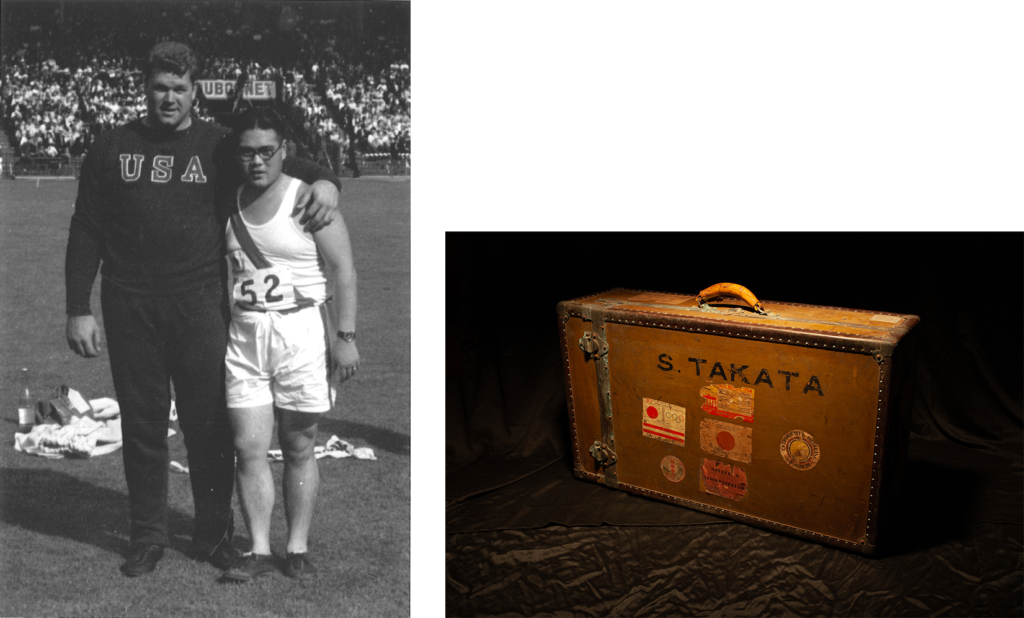
Takata Shizuo
1909-1963. Born in Hiroshima City, Japan. Participated in the 1936 Berlin Olympics representing Japan in the shot put. On August 6, 1945, he was exposed to the atomic bomb at the headquarters of Chugoku Electric Power Co. Although he survived, he lost his daughter. After the bombing, while suffering from severe aftereffects, he continued to take photographs, which have been passed on to his grandson, Toshiaki, and have touched the hearts of many people.

“Takata Shizuo Exhibition: The Road to Peace”
June 26, 2021 (Sat) – August 29, 2021 (Sun)
Venue: Izumi Art Museum (Excel Main Building 5F, 2-3-1 Shoko Center, Nishi-ku, Hiroshima City)
TEL: 082-276-2600
Hours: 11:00 – 17:00 (Admission: until 16:30)
Closed: Mondays *Open on Monday, August 9 (national holiday)
Admission: 300 yen (adults), 150 yen (students), free for junior high school students and younger
Homepage:http://www.izumi-museum.jp/
Tags associated with this article




